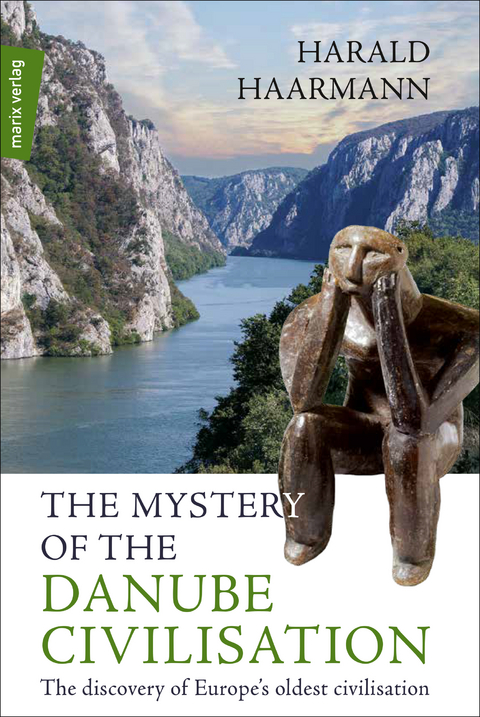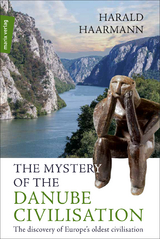The Mystery of the Danube Civilisation
marix Verlag ein Imprint von Verlagshaus Römerweg
978-3-7374-1145-5 (ISBN)
Harald Haarmann is one of the world’s best-known linguists. He studied general linguistics, various philological disciplines and prehistory at the universities of Hamburg, Bonn, Coimbra and Bangor. He obtained his PhD in Bonn and his Habilitation (qualification at professorship level) in Trier. He taught and researched at a number of German and Japanese universities. Since 2003 he has been Vice-President of the Institute of Archaeomythology (main office in Sebastopol, California, USA) and director of its “European Branch” (located in Luumäki, Finland). Professor Haarmann has authored more than 70 books in German and English, some of which have been translated into over a dozen languages. In addition to this study on the Danube Civilisation, he has produced remarkable insights into the roots of ancient Greek civilisation and the early history of Rome. His work has earned him the Prix logos (1999), awarded by the Association européenne des linguistes et des professeurs de langues (Paris) and the Premio Jean Monnet (Genova, 1999) for essay writing. In 2006 he received the Plato Award (UK). He lives and works in Finland.
ContentsThe puzzle of a 7,000 year-old civilisation91. The transition to the Neolithic in Europe(ca. 7500-5500 BCE)13Early farmers in Southeast Europe 14The emergence of regional cultures 40Cultural timeline of Old Europe 482. In search of the Old Europeans51The genetic footprint 51Linguistic traces 563. Commerce and living space79Trade routes and commodities 79Settlements and architecture 88Religious sites and graves 994. Arts and crafts109Weaving and textiles 110Pottery and firing techniques 114Metallurgy 118Art forms and cultural symbols 1225. Model of an egalitarian society141Matriarchal or matrilineal? 144Families and clans 146Oecumene and trade 1486. Religion and mythology153The world view of hunter-gatherers and farmers 155Female deities in Old Europe 156The bull - Animal symbols as attributes of the goddess 160Cults and rituals 161Music and dance 1697. Counting, measuring, recording173Numerical signs and numerology 173Calendrical notation 175Weights and measures 180Potter's or ownership marks 1818. The invention of writing183Origin and development of the Danube script 184The spread of writing in Old Europe 190Writing materials, inscriptions and varieties of text 193The repertory of Old European signs 196Written legacy of the Danube Civilisation 200A script in the service of religion 212The demise of the use of writing 2149. The decline and legacy of the Danube Civilisation(from around 4500 BCE)217Political and cultural upheavals 218The Balkan-Ancient Aegean cultural drift 227Minoan-Cypriot contacts: How Aegean script was exported 243 Epilogue249Bibliography259Key to inside cover map279
The puzzle of a 7,000 year-old civilisation To this day, there is still a widespread belief that it was the Greeks who built the first European civilisation, illuminating a shining light to dispel the darkness of prehistory. For this reason, most of us feel indebted to the Greeks for laying the foundations of our modern world. And it is not often that anyone asks if the Greek civilisation really was as original as our school books suggest. The aim of this book is to introduce the reader to another European civilisation, one that is much older than Ancient Greece, and research over the last twenty years has enabled its contours to become ever clearer: The achievements of the Danube Civilisation, whose beginnings lie in the Neolithic (Younger Stone Age) and which experienced its heyday in the Chalcolithic (Copper Age), created the conditions that enabled the rapid rise of Greek culture in the first millennium BCE. "In the 5th and early 4th millennia B.C., (...), Old Europeans had towns with a considerable concentration of population, temples several stories high, a sacred script, spacious houses of four or five rooms, professional ceramicists, weavers, copper and gold metallurgists, and other artisans producing a range of sophisticated goods" (Gimbutas 1991: viii). Twenty years ago, the term "Old Europe" tended to be familiar only among experts, and knowledge of the advanced culture of this pre-Greek population was somewhat sketchy. Much of what the American- Lithuanian archaeologist Marija Gimbutas (1921-1994) had reconstructed for her mosaic of Old Europe was hypothetical. But a lot has happened since then. The political turnaround in Eastern and Southeast Europe after 1989 has led to an upturn in research and cultural activity in the newly independent states and, as a result, to an intensification of excavation activities, both in Southeast Europe and in the Ukraine, where important Old European sites are located. Since the end of the 20th century, the amount of material evidence has grown considerably, and recent findings leave no doubt that the cultural level of this pre-Greek society can only be described as a civilisation. "At its peak, about 5000-3500 BCE, Old Europe was developing many of the political, technological, and ideological signs of 'civilisation'" (Anthony 2009 a: 29). What we considered to be part of prehistory until just yesterday actually belongs to the historical period.
| Erscheinungsdatum | 31.10.2019 |
|---|---|
| Zusatzinfo | zahlr. s/w Abbildungen |
| Verlagsort | Wiesbaden |
| Sprache | englisch |
| Maße | 140 x 210 mm |
| Gewicht | 486 g |
| Themenwelt | Sachbuch/Ratgeber ► Geschichte / Politik ► Vor- und Frühgeschichte / Antike |
| Geisteswissenschaften ► Archäologie | |
| Geisteswissenschaften ► Geschichte ► Regional- / Ländergeschichte | |
| Schlagworte | advanced civilization • altägäische Kulturdrift • Alteuropa • Ancient Aegean cultural shift • ancient greeks • Balkan • Balkans • Black Sea flood • Cermavoda • chalcolithic • Cucuteni • Danube script • Donauschrift • Donauzivilisation • Figurinen • figurines • Great Goddess • Harald Haarmann • Hochkultur • Indoeuropäer • Indo-Europeans • Karanovo • Kupfersteinzeit • Majdanec'ke • Marija Gimbutas • Minoans • Minoer • Neolithic • old Europe • pre-Greek • Prehistory • pre-Indo-European • Schwarzmeerflut • Tallyanky • The Mystery of the Danube Civilization • Varna • vinca • vorgriechisch • vorindoeuropäisch |
| ISBN-10 | 3-7374-1145-X / 373741145X |
| ISBN-13 | 978-3-7374-1145-5 / 9783737411455 |
| Zustand | Neuware |
| Haben Sie eine Frage zum Produkt? |
aus dem Bereich




